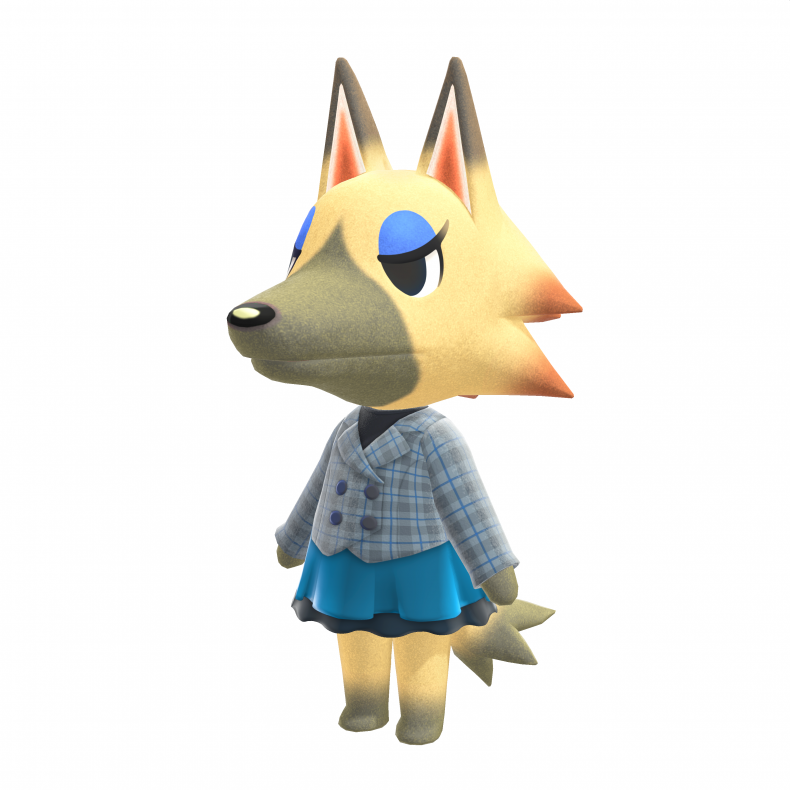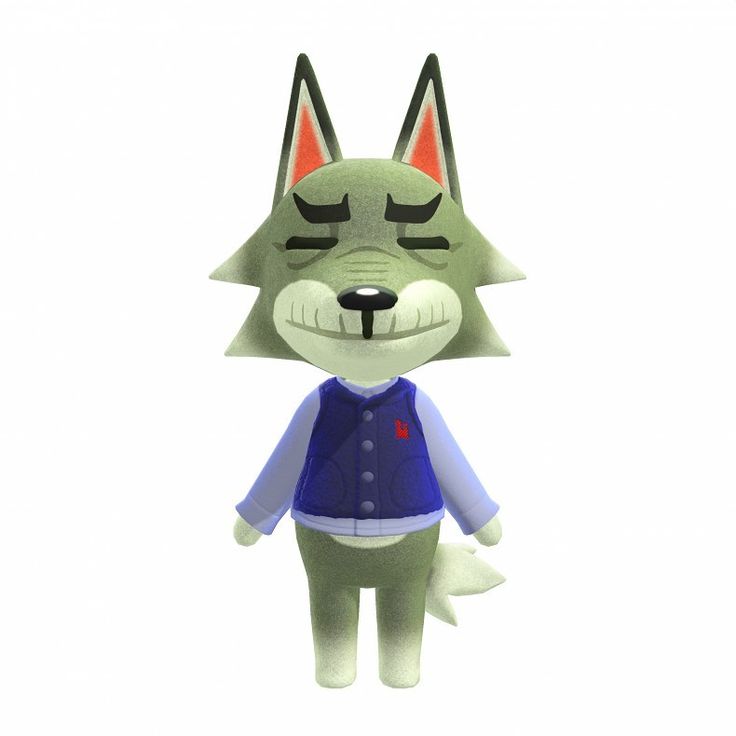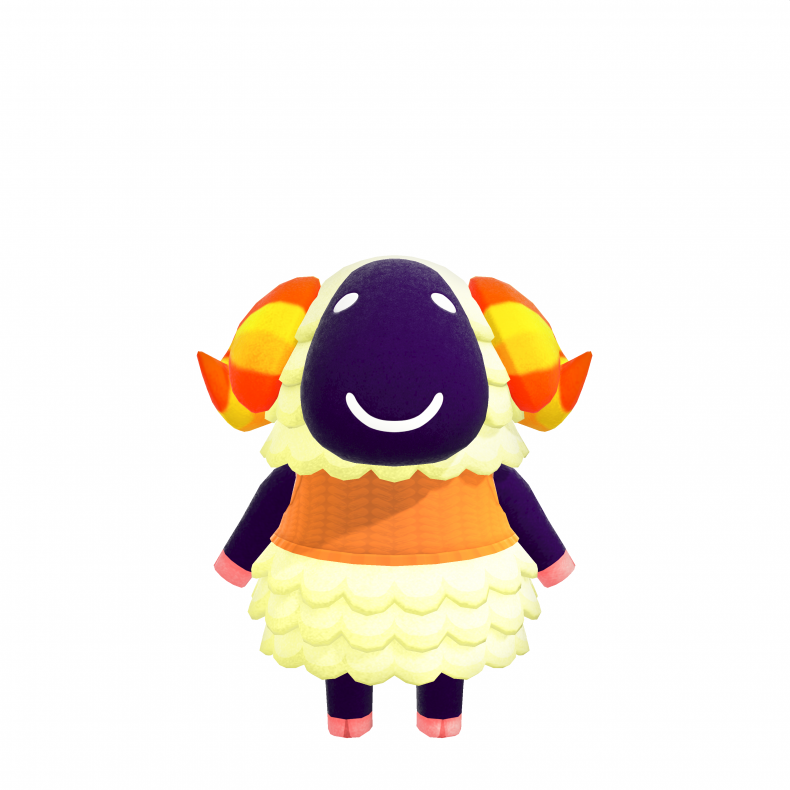Tauchen in Animal Crossing: New Horizons — So klappt’s
| von
Theresa Müller
In „Animal Crossing: New Horizons“ können Sie beim Tauchen die Unterwasserwelt erkunden. Hier finden Sie eine Anleitung, was Sie zum Tauchen benötigen, wie Sie ins Wasser gelangen und wie Sie dort nach Meerestieren suchen können.
Die mit einem Symbol oder grüner Unterstreichung gekennzeichneten Links sind Affiliate-Links. Kommt darüber ein Einkauf zustande,
erhalten wir eine Provision — ohne Mehrkosten für Sie! Mehr Infos.
Animal Crossing: New Horizons – Tauchen nur mit Taucheranzug
Um nach dem Sommer-Update in Animal Crossing: New Horizons tauchen zu können, benötigen Sie zuerst einen Taucheranzug. Diesen erwerben Sie wahlweise in Nooks Laden, der von Nepp und Schlepp geführt wird oder im NookPortal.
- Nepp und Schlepp: Im Laden von Nepp und Schlepp erhalten Sie für 3.000 Sternis einen gestreiften Taucheranzug. Nach dem Kauf ist dieser auch gleich einsatzbereit.
- NookPortal: Auch das NookPortal bietet einen Taucheranzug zum Verkauf an. Für den „Nook-Inc.-Taucheranzug“ im gewohnten Nook-Design werden 800 Meilen fällig.
- Erwerben Sie Ihren Taucheranzug über das NookPortal, wird Ihnen Ihre Bestellung erst am nächsten Tag per Post zugestellt. Sie müssen sich mit Ihrem ersten Tauchgang deshalb bis zum nächsten Tag gedulden.
- Taucherbrille und Schnorchel: Im Spiel benötigen Sie weder Taucherbrille noch Schnorchel, um im Wasser tauchen zu können. Mit den stylischen Accessoires können Sie jedoch Ihren Taucher-Look vervollständigen. Taucherbrille und Schnorchel werden Ihnen als Geschenk automatisch in Ihren Briefkasten zugestellt.
Tauchen in Animal Crossing: New Horizons: Taucheranzug für 800 Meilen im NookPortal
Screenshot: Animal Crossing New Horizons/ Theresa Müller
So funktioniert das Tauchen: Y-Taste drücken
Das Tauchen klappt nur, wenn Sie beide Hände frei haben. Bevor Sie ins Wasser springen, legen Sie alle Werkzeuge beiseite. Anschließend müssen Sie sich nur noch Ihren Taucheranzug überstreifen und los geht’s:
Bevor Sie ins Wasser springen, legen Sie alle Werkzeuge beiseite. Anschließend müssen Sie sich nur noch Ihren Taucheranzug überstreifen und los geht’s:
- Ziehen Sie Ihren Taucheranzug über das Inventar an. Falls Sie möchten, wählen Sie auch noch die Taucherbrille mit integriertem Schnorchel aus.
- Begeben Sie sich nun zum Steg, auf einen hervorstehenden Stein über dem Wasser oder einfach direkt ans Wasser.
- Drücken Sie die A-Taste, um ins Wasser zu springen.
- Schwimmen – A-Taste: Halten Sie A gedrückt, um zu schwimmen. Drücken Sie die A-Taste mehrmals hintereinander, schwimmen Sie schneller. Mit dem linken Curser können Sie Ihren Charakter in alle Richtungen durch das Wasser navigieren.
- Tauchen – Y-Taste: Um zu tauchen, drücken Sie im Wasser die Y-Taste. Bestimmen Sie die Richtung mit dem linken Curser.
- Möchten Sie nach dem Tauchgang wieder an Land gelangen, schwimmen Sie zum Strand und drücken die A-Taste.

Entdecken Sie neue Meerestiere in der Unterwasserwelt
Das Tauchen in „Animal Crossing: New Horizons“ macht viel Spaß und Sie können dabei diverse Meerestiere entdecken und einfangen. Unter Wasser finden Sie Perlen, Muscheln und natürlich verschiedene neue Meerestiere.
- Tiere finden: Achten Sie bei der Suche nach Tieren auf aufsteigende Luftbläschen an der Wasseroberfläche. Wie auch beim Angeln, dient ein Schatten im Wasser als Hinweis auf ein vorbeiziehendes Meerestier.
- Meerestiere einsammeln: Drücken Sie die Y-Taste, wenn Sie einen Meeresbewohner aufgespürt haben, um ihn einzufangen. Gehen Sie mit etwas Abstand zum Tier unter Wasser, ansonsten besteht die Gefahr, dass Sie den Meeresbewohner verscheuchen.
Animal Crossing — New Horizons: Haie fangen
Mit dem Party-Modus können Sie zusammen mit Freunden und Familie spielen. Wir zeigen Ihnen, wie genau der Multiplayer für Animal Crossing: New Horizons funktioniert.
Aktuell viel gesucht
Aktuell viel gesucht
Durchschnittlicher Gasverbrauch Einfamilienhaus: Das verbrauchen Haushalte mit 1 — 4 Personen
Durchschnittlicher Gasverbrauch Einfamilienhaus: Das verbrauchen Haushalte mit 1 — 4 Personen
Stromverbrauch beim Fernseher pro Stunde: So hoch ist er
Stromverbrauch beim Fernseher pro Stunde: So hoch ist er
Was ist ein Cameltoe? Bedeutung und Herkunft des Modebegriffs
Was ist ein Cameltoe? Bedeutung und Herkunft des Modebegriffs
49-Euro-Ticket: Wann, wo und für wen das Deutschlandticket gilt
49-Euro-Ticket: Wann, wo und für wen das Deutschlandticket gilt
Warnung: Das verbirgt sich hinter dem Feuerwehrspiel
Warnung: Das verbirgt sich hinter dem Feuerwehrspiel
Sie haben Ihre Kopfhörer immer falsch getragen — darauf müssen Sie achten
Sie haben Ihre Kopfhörer immer falsch getragen — darauf müssen Sie achten
Onlyfans: Was das ist und wie das Portal funktioniert
Onlyfans: Was das ist und wie das Portal funktioniert
Einkaufswagen ohne Chip öffnen — so geht’s
Einkaufswagen ohne Chip öffnen — so geht’s
Instagram-Account löschen: So deaktivieren Sie Ihr Konto
Instagram-Account löschen: So deaktivieren Sie Ihr Konto
USB: Das ist der Unterschied zwischen Lade- und Datenkabel
USB: Das ist der Unterschied zwischen Lade- und Datenkabel
Fernseher ganz ausschalten: Ist es schädlich, den Stecker zu ziehen?
Fernseher ganz ausschalten: Ist es schädlich, den Stecker zu ziehen?
Lohnt sich HelloFresh? Kochbox und Kosten im Vergleich zum Wocheneinkauf
Lohnt sich HelloFresh? Kochbox und Kosten im Vergleich zum Wocheneinkauf
Neueste Spiele-Tipps
- 7 Days to Die: Rahmenform verbessern – so geht’s
- Clash of Clans: Warum APK Mods nichts bringen
- Modern Warfare 2 Crossplay: Alle Infos
- Tower of Fantasy: Aussehen ändern – so geht’s
- League of Legends: Sprache ändern — so geht’s
- Roblox Voice Chat: So aktivieren und deaktivieren Sie Spatial Voice
- Minecraft: Dorfbewohner vermehren – so geht’s
- Weitere neue Tipps
Beliebteste Spiele-Tipps
- Minecraft: Die 10 besten Seeds
- Sims 4: Alle Cheats im Überblick
- PS4-Controller verbindet nicht: Das können Sie tun
- Sims 4: Fähigkeiten erhöhen — so geht’s besonders schnell
- Sims 4: Beziehungen per Cheat bearbeiten — so geht’s
- Sims 4: CC Downloads finden und dem Spiel hinzufügen
- Sims 4: Objekte hoch und runter bewegen — so geht’s
- Weitere beliebte Tipps
Die besten Shopping-Gutscheine
- Gutscheine von OTTO
-
Deinhandy.
 de-Gutscheine
de-Gutscheine
- Rabatte bei Saturn
- Home24-Rabattcodes
- Weitere Gutscheine
Themen des Artikels
Animal Crossing
Animal Crossing: So bekommt ihr den Taucheranzug
Eine schöne erste Runde im Meer. Hier mit der Taucherbrille im Nook-Inc.-Deisgn unddem schönen Blattmuster-Tauchanzug. Quelle: Animal Crossing New Horizons
Jetzt ist das Sommer-Update für Animal Rossing New Horizons (Version 1.3.0) endlich da. Als größte Neuerung könnt ihr nun endlich ins Meer springen, schwimmen, planschen und tauchen! Wie prima ist das denn?
Gerade, wenn die Sonne so richtig auf euch herabscheint, tut so eine kleine Erfrischung doch besonders gut, oder? Um auch das Wasser um eure kleine Insel zu erkunden braucht ihr lediglich zwei Kleinigkeiten: eine Taucherbrille mit Schnorchel und einen Taucheranzug.
Mit dem Sommer-Update: Ab ins Wasser!
Bislang konnte man in Animal Crossing New Horizons nur auf dem Land herumspazieren. Mit dem neuen Sommer-Update erweitert Nintendo eure Bewegungsfreiheit. Zusammen mit Taucherbrille und Taucheranzug könnt ihr ins Wasser springen. Darin könnt ihr treiben, schwimmen und sogar tauchen. Ihr braucht übrigens keine Sorge haben, man kann nicht zu weit von der Insel abgetrieben werden, ringsum das Eiland ist ein Netz gespannt – natürlich nur zu eurem Schutz.
Mit dem neuen Sommer-Update erweitert Nintendo eure Bewegungsfreiheit. Zusammen mit Taucherbrille und Taucheranzug könnt ihr ins Wasser springen. Darin könnt ihr treiben, schwimmen und sogar tauchen. Ihr braucht übrigens keine Sorge haben, man kann nicht zu weit von der Insel abgetrieben werden, ringsum das Eiland ist ein Netz gespannt – natürlich nur zu eurem Schutz.
In Nooks Laden zahlt ihr 3000 Sternis für einen Taucheranzug.
Sobald ihr das Sommer-Update heruntergeladen habt, erhaltet ihr von Nintendo ein kleines Dankesschreiben per Post. Als Geschenk angeheftet findet ihr eine Taucherbrille mit Schnorchel. Jetzt braucht ihr nur noch einen passenden Taucheranzug, den findet ihr entweder in Nooks Laden (3000 Sternis) oder im Rathaus am NookPortal (800 Meilen). Im NookPortal gibt es übrigens Taucheranzug und Brille im speziellen Nook-Inc.-Design. Denkt dran, dass der neue Anzug dann erst per Post zu euch geschickt wird… das dauert leider einen Tag.
Meerestiere fürs Museum
Wer hätte gedacht, dass auch Eugen sich über die sommerliche Jahreszeit freuen kann? Nicht nur, dass im Juli natürlich wieder ein Schwung neuer Fische und Insekten zu finden sind (Fossilien lässt die Jahreszeit eher kalt), durch die Erschließung des Meeres um die Insel herum, gibt es nun ein paar neue Dinge, die ihr im Museum abgegeben könnt: Meeresbewohner. So findet ihr zum Beispiel Babylon-Seeschnecken, Ohrenquallen und mehr. Ihr findet sie, sobald ihr im Wasser seid. Wenn ihr irgendwo einen Schatten seht von dem aus kleine Bläschen an die Wasseroberfläche aufsteigen, dann taucht schnell ab (mit „Y“) und sammelt mit „A“ auf, was ihr da unten aufgestöbert habt.
So findet ihr zum Beispiel Babylon-Seeschnecken, Ohrenquallen und mehr. Ihr findet sie, sobald ihr im Wasser seid. Wenn ihr irgendwo einen Schatten seht von dem aus kleine Bläschen an die Wasseroberfläche aufsteigen, dann taucht schnell ab (mit „Y“) und sammelt mit „A“ auf, was ihr da unten aufgestöbert habt.
Unterm Wasser eröffnet sich eine komplett neue Welt für Tierforscher. Eugen würde hier seine wahre Freude haben.
Mit der Version 1.3.0 ist es übrigens noch nicht getan in puncto Sommer-Update. Laut Nintendo kommt da noch mehr auf uns zu. Anfang August sollen schon neue Überraschungen auf uns warten. Bis dahin heißt es fröhlich schwimmen und Meeresbewohner aufschrecken. Wir wünschen euch viel Spaß dabei!
Wenn ihr mehr über Animal Crossing lesen wollt, dann schaut doch mal in unserer Kategorie vorbei: Animal Crossing: New Horizons
18 hybrid animals, the existence of which is hard to believe
The world is full of stories about strange and unknown animals. Many legends about hybrid creatures appear thanks to the masters of Photoshop. But in this collection there is not a single photoshopped picture. We will tell you only about real animals that were born as a result of crossing different species.
Many legends about hybrid creatures appear thanks to the masters of Photoshop. But in this collection there is not a single photoshopped picture. We will tell you only about real animals that were born as a result of crossing different species.
1. Liger (male lion + female tiger)
Photo: ohmyimaginaryfriend
There are rumors about the existence of wild ligers, but as far as we know, they live only in captivity, where they are deliberately bred. Animals very quickly grow to large sizes and are considered the largest cats in the world. Pictured is Hercules, the largest living feline on Earth. It weighs over 410 kilograms. (Source.)
2. Tigon (male tiger + lioness)
Photo: ohmyimaginaryfriend
And that’s not all. It turns out that ligers and tigons also produce offspring. (Source)
3. Zebroid (a hybrid of a zebra and a donkey)
Photo: firenze.repubblica.it
In the photo above, a variation of the zebra + donkey. (Source)
(Source)
4. Jaglion (male jaguar + female lion)
Photo: bearcreeksanctuary.com
A rare combination. Photographs of Jazzara and Tsunami, born in Bear Creek Wildlife Sanctuar, Ontario, Canada. (Source)
5. Basles (sheep + goats)
Photo: My Petting Zoo
Another rare animal. A goat has 60 chromosomes, and a sheep has 54. The offspring obtained by crossing a ram with a goat or a goat with a sheep are usually stillborn. (Source)
6. Grolar (eng. grizzly + polar) or polar grizzly (polar bear + brown bear)
Photo: dpa
Such an interspecific hybrid of a bear is found both in zoos and in the wild. (Source)
7. Coywolf (coyote + wolf)
Photo: Anne Marie Fraser
Coyotes and eastern wolves (North American timber wolf) began to differ only 150-300,000 years ago, and both species are able to produce offspring. The coywolf shares many common behavioral characteristics from the coyote and from the wolf. (Source)
(Source)
8. Zebroid (zebra + any member of the horse family)
Photo: panoramio.com
Darwin was one of the first to talk about zebroids as violent animals that are difficult to tame. They are more aggressive than horses. (Source)
9. Savannah cat (domestic cat + African serval)
Photo: nitewindes.com
These beautiful creatures are devoted like dogs, play ball, are not afraid of water and get along well with other pets. Savannahs are very expensive animals. (Source)
10. Killer whale (male black killer whale + female bottlenose dolphin)
Photo: sbingham.seabird
Black killer whales actually belong to the same family as dolphins, but a hybrid of these animals is extremely rare. Only one orca dolphin is known to exist in captivity. (Source)
11. Beefalo
Photo: beefalo.bandcamp.com
This bison-cow hybrid has been known since 1800. Unfortunately, scientists believe that as a result of crossing purebred wild bison, only four herds remained. (Source)
(Source)
12. Hinny (female donkey + male horse)
They are slightly smaller than mules and much less common. (Source)
13. Narluga (narwhal + beluga)
This hybrid is extremely rare. Recently seen in the North Atlantic.
14. Camel (one-humped camel + llama)
Photo: craigwright
This animal was first bred for fur in 1998 at the Camel Reproduction Center in Dubai using artificial insemination. Only five individuals were brought out. (Source)
15. Hainak (dzo) (cow + wild yak)
Photo: tomato umlaut
This hybrid is larger and stronger than cows and yaks separately. Hainak is valued in Tibet and Mongolia for meat and milk. (Source)
16. Leopon (male leopard + female lion)
These beautiful animals are found only in captivity. (Source)
17. Mulard (musky duck drakes + domestic ducks)
Photo: prodejdrubeze.cz
They are bred for meat production, but mulards do not produce offspring. (Source)
(Source)
18. Zubron (cow + bison)
Photo: wikimedia.org
They are stronger, more resistant to disease and immune to bad weather. Zubrons were initially considered as a possible replacement for livestock. Now there is a small herd of these animals in the national park «Belovezhsky» in Poland. (Source)
These days, graphic designers and Photoshop enthusiasts create their own fun by combining different types of animals. Even in cartoons, there were similar creatures — for example, stolen by Peter Hannan from the Looney Tunes 19 universeA 1940s cat-dog who became a side character in my dark fantasy.
6408
views
However, nature has its own hybrids — real, living creatures. They could appear by chance (when two similar animal species are crossed) or were obtained by in vitro fertilization («in vitro») or somatic hybridization.
But, I’ll make a reservation right away, even such a phenomenon in the real world has its own ethical framework — it’s unlikely that any normal person will think of crossing a dolphin with a human in the laboratory for the sake of laughter and get an analogue of a mermaid or, as in the video «Scientifically Accurate» to sew together the two front parts of a cat and a dog for the sake of a cat, like in a cartoon.
In addition to the animals themselves, their names are also very interesting, which, it must be said, depend on the sex and variety of the parents. For example, males usually give the first half of the species name, and females the second.
Thus, an interspecific hybrid called «peasley» (polar bear + grizzly) was obtained by crossing a male polar bear and a female grizzly, while a cross named «grolar» — on the contrary, a cross between a male grizzly bear and a female polar bear.
In this collection you will see some real hybrids ever created by people. So let’s start the review.
So let’s start the review.
1. Liger
This is a hybrid born from crossing male lion and female tiger . It can only exist in captivity, since the habitats of the parent species in the wild do not overlap.
Ligers, which can weigh up to 400 kilograms, are the largest felines known to exist. Also known in the world are Liligers — hybrids between ligers and male/female lion or tiger.
2. Tigon or Tigrolev
Another member of the cat family and the victim of a genetic experiment. He is a hybrid of a male tiger and a lioness . Tigons usually do not exceed the size of their parent species, because they inherit growth-retarding genes from the female lioness.
Like ligers, tigers are quite capable of producing their offspring, which leads to the birth of new … mutants known as T itigons .
3. Yaglev
This animal is a hybrid of a male jaguar and a female lion. Yaglev has the powerful physique of a jaguar, and the color of his coat has adopted the features of both species: the color of the coat, like a lion, and brown rosettes, like a jaguar. Yaglev is currently on display at the Walter Rothschild Zoological Museum.
Yaglev has the powerful physique of a jaguar, and the color of his coat has adopted the features of both species: the color of the coat, like a lion, and brown rosettes, like a jaguar. Yaglev is currently on display at the Walter Rothschild Zoological Museum.
4. Savannah
Do not confuse this name with the area where lions and cheetahs live!
The Savannah cat is a cross between a serval (a medium-sized African wild cat) and a domestic cat. Savannahs are commonly compared to dogs for their loyalty. They can even be trained on a leash and taught to fetch dead game.
5. Leopon
Two yagles, named Zhazhara and Tsunami, were born in the Bear Creek Wildlife Refuge in Ontario.
The last member of the cat family on this list. This time a lioness was crossed with a male leopard . This situation is almost impossible in the wild, because all leopons were raised in captivity. Leopons have the head and mane of a lion, and the body of a leopard. This is the rarest of these hybrids.
This is the rarest of these hybrids.
6. Coywolf
This is — a hybrid of a coyote and a female of either gray, or oriental, or red wolf — representatives of the Canine family of North America. Coyotes are genetically similar to red and eastern wolves, from which they split off about 150,000 to 300,000 years ago.
Interbreeding between them is not only possible, but is becoming more common as the wolf population recovers.
However, coyotes are not very compatible with gray wolves, from which they are genetically separated by 1-2 million years. Some hybrids, although they exist, are very rare. They are generally larger than coyotes but smaller than wolves, and have characteristics of both species.
7. Volkosob
Today wolfdogs (full name «Czechoslovakian Wolfdog» ) is a new, officially recognized breed of dog that arose as a result of an experiment conducted in 1955 in Czechoslovakia. Volkosob is a hybrid of a German Shepherd and a Carpathian wolf.
Volkosob is a hybrid of a German Shepherd and a Carpathian wolf.
The aim of the crossbreeding was to create a breed with the temperament, herd mentality and trainability of the German Shepherd and the strength, physical build and endurance of the wolf.
8. Cama
Kama is a hybrid of a male dromedary (one-humped camel) and a female llama , bred by artificial insemination at the Camel Reproduction Center in Dubai.
The first kama was born on January 14, 1998. The aim of the crossbreeding was to create an animal that would be like a llama in its coat, but in size, strength and responsive disposition — like a camel. To date, as many as five camel-llama hybrids have been produced.
9. Narlukha
Another very rare hybrid created by crossing a narwhal, a medium-sized mammal with a tusk, and a beluga whale, an arctic and subarctic toothed whale from the narwhal family.
Narluhs are extremely rare in nature, but in recent years there has been an interesting trend of increasing cases when these hybrid animals are found in the North Atlantic.
10. Wolfin, or killer whale (Wholphin)
The second type of marine mammal hybrids in the body of a fish. This is an extremely rare cross male of a small killer whale (black killer whale) and a female dolphin from the genus Bottlenose Dolphin . The first recorded wolffin was born at Tokyo SeaWorld , however he died 200 days later.
The first wolffin in the USA and the first to survive was a female named Kekaimalu born in Sea Life Park in Hawaii in 1985.
11. Africanized killer bee
Killer Bees were created in an attempt to breed domesticated and more manageable bees. This was done by crossing the European honey bee and the African honey bee, but the offspring, which turned out to be more aggressive and more viable, were mistakenly released into the wild in 1957.
Since then, Africanized bees have spread throughout South, Central and North America.
12. Mule
Mule
Mules are born from mating male donkey and mare. Mules are more patient, stable and hardy than horses, and in addition, they live longer than horses.
They are considered less stubborn, quicker and smarter than donkeys. These hybrids are valued for their developed pack ability, mules usually weigh 370-460 km.
13. Hinny
The exact opposite of a mule. The hybrid was born as a result of stallion and donkey crosses . The hinnies are much rarer than the mules, as they are inferior to them in endurance and performance. In addition, male and female hinnies are always sterile.
14. Zebroid
Known by many other names such as zedonk, zorse, zebrul, zonki and zemul , a zebroid is a cross between a female zebra and any other member of the equine family (horse, donkey, etc.).
Bred since the 19th century, zebroids bear a physical resemblance to their non-zebra parent, but are as striped as zebras, although the stripes do not usually cover the entire body of the animal. Zebroids are more wild than pets, difficult to tame, and more aggressive than horses.
Zebroids are more wild than pets, difficult to tame, and more aggressive than horses.
15. Beefalo
Sometimes referred to as the cattalo or American hybrid, the bifalo is a hybrid of a domestic bull and an American aurochs/buffalo (predominantly females).
Beefalo looks and genetically first of all resembles a domestic bull, only 3/8 adopting the genetics of the American bison. For the first time, people crossed bulls and bison in the middle of the 19th century.
Prior to November 2008, there were two animal registration organizations: American Beefalo World Registry and American Beefalo International . After the 2008 date, the two organizations merged and the new organization became American Beefalo Association, Inc. She is registering the animals at the moment.
16. Dzo
Zou, also known as «hainak» or «hainik» , is a hybrid of yak and domestic cow. Technically, the word «zo» refers to male hybrids, while in relation to females, the word «zomo» is used. Unlike fertile zomos, zomos are barren.
Unlike fertile zomos, zomos are barren.
Since these animals are the product of a hybrid genetic phenomenon called «heterosis» (increasing the viability of hybrids in subsequent generations), these animals are larger and more hardy than yaks and livestock living in the same region.
17. Cowzon
A hybrid of cow and bison has been around since the 19th century when they were called katalos. Cow bison are healthier than cattle and cause less environmental damage to the prairies where they graze.
Unfortunately, as a result of breeding, there are now only 4 herds of bison that do not have cow genes.
18. Zubron
Zubron is a hybrid of a cow and a bison . Zubrons are superior to domestic cows in many respects, as they are stronger and more resistant to disease.
They were considered as a possible replacement for cattle, but now bison remain in only one herd in Belovezhskaya Pushcha in Poland.
The name «zubron» was chosen from hundreds of proposals sent to the Polish weekly «Przekroj» during a competition organized in 1969.
Male bison are sterile in the first generation, but females are fertile and can be bred to either of these species as a parent.
19. Mulard
Mulard is a cross between a white Peking duck and a Muscovy duck. The Muscovy Duck is native to South and Central America and is distinguished by bright red growths on its face. Moulards are raised for meat and foie gras, and they themselves cannot produce their offspring.
20. Sheep goat (Geep)
A sheep-goat cross is born by crossing a ram with a goat or a goat with a sheep. Although the two species appear similar and may mate, they belong to different genera of the goat subfamily of the bovid family.
Despite the widespread herding of goats and sheep, hybrids are very rare, and mating offspring are usually stillborn. The animal, called a goat-sheep chimera, was artificially raised from embryos.
The animal, called a goat-sheep chimera, was artificially raised from embryos.
21. Grolar
Rare hybrid male grizzly and female polar bear . Although the two species are genetically similar and often found in the same areas, they generally avoid each other and have different breeding habits.
Grizzlies live and breed on land, while polar bears prefer to do so on ice. Grolars can exist both in captivity and in the wild.
Most of the polar grizzlies , as the Grolars are sometimes called, live in the zoo, but there have been a few cases where they have been seen in the wild. In 2006, an Alaskan hunter shot and killed one. Outwardly, they are similar to both polar and brown bears, but in behavior they are closer to polar bears.
22. Peasley
As mentioned above, a pizzly is a hybrid obtained by crossing a male polar bear and a female grizzly bear. In 2010, the world heard about this hybrid because hunter David Kuptan killed a bear that looked like a white/grizzly hybrid.
Only after DNA analysis it became clear that this is the first confirmed hybrid, but already the second generation, that is, his mother was a hybrid of a polar bear and a grizzly bear, and his father was a grizzly bear. And for the first time this species of bears was obtained in 1874 at the London Zoo.
Later, in 1876, the experience was repeated in Germany, where a female European brown bear gave birth 4 times to a male polar bear, currently a stuffed animal of one of their children (an adult of course) is in the Rothschild Zoological Museum in Tring (UK).
Speaking of children. Both Grolars and Peasleys are born strong and prolific, their hair is more light and their diet is more taken from polar bears, so young hybrids almost do not eat grass and berries, eating exclusively fish and small animals.
Bear cubs are fiercely protective of their possessions and rarely walk away from conflict, which is a characteristic trait of the grizzly. Among the peoples of the North, both hybrids are called Nanulak and Aknuk .
